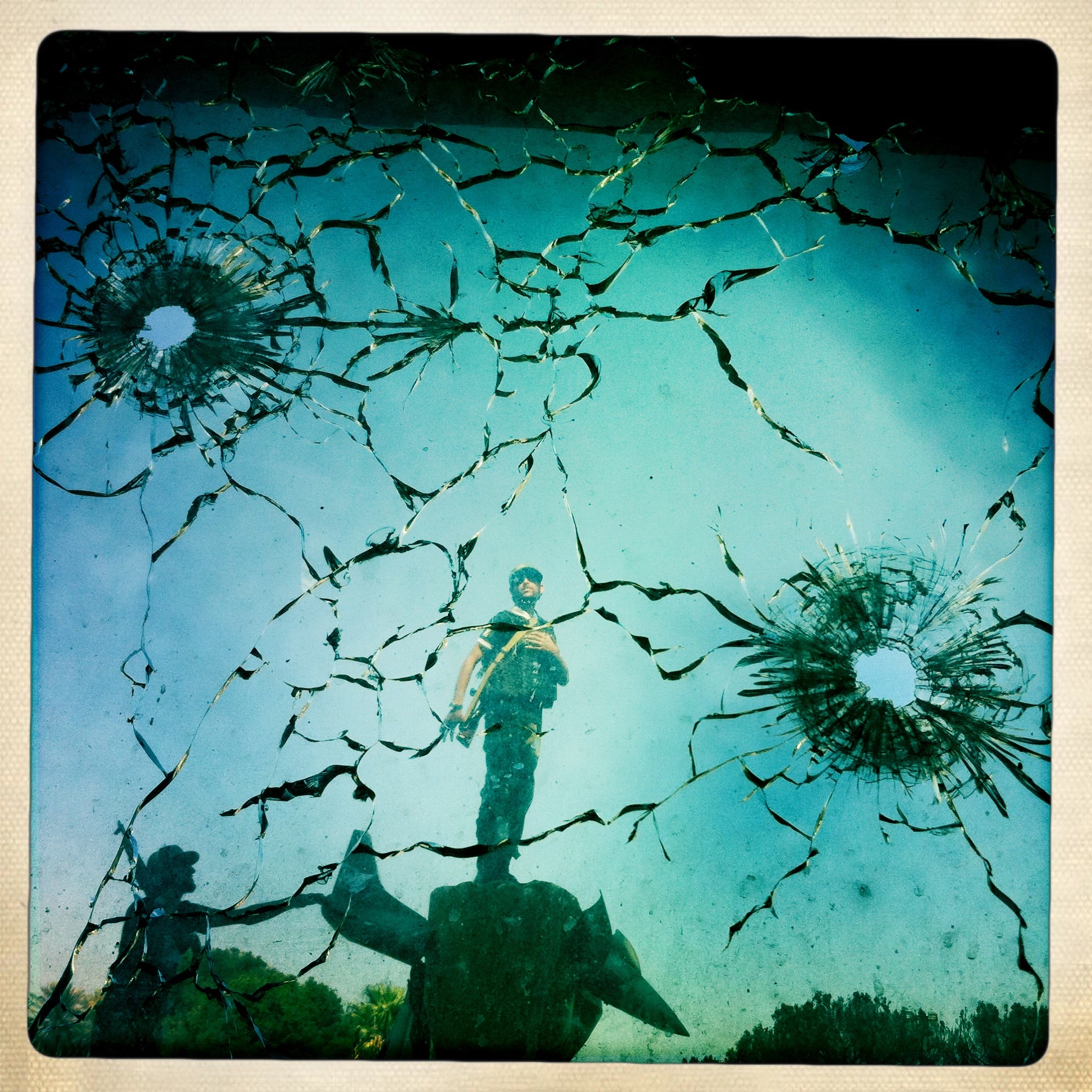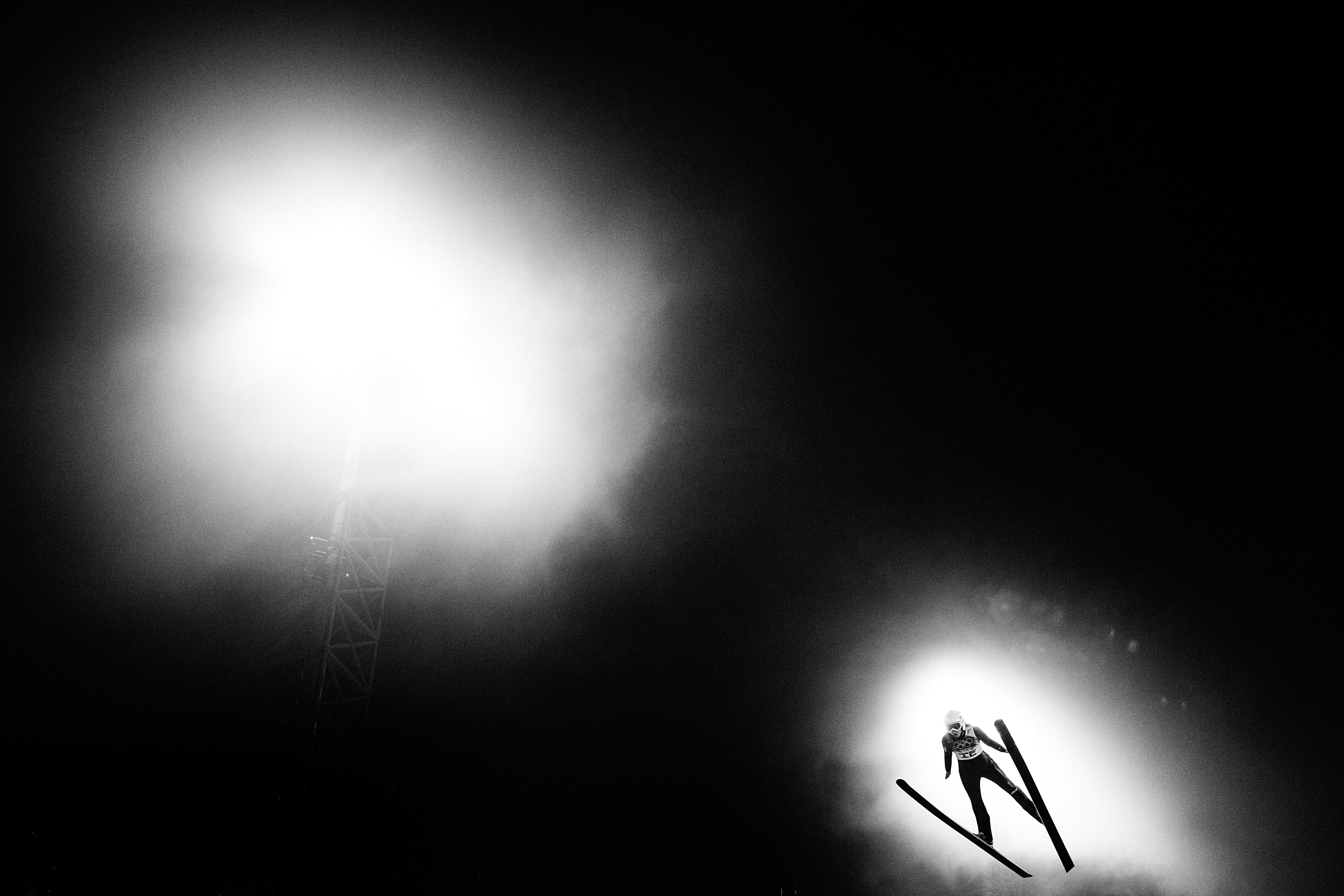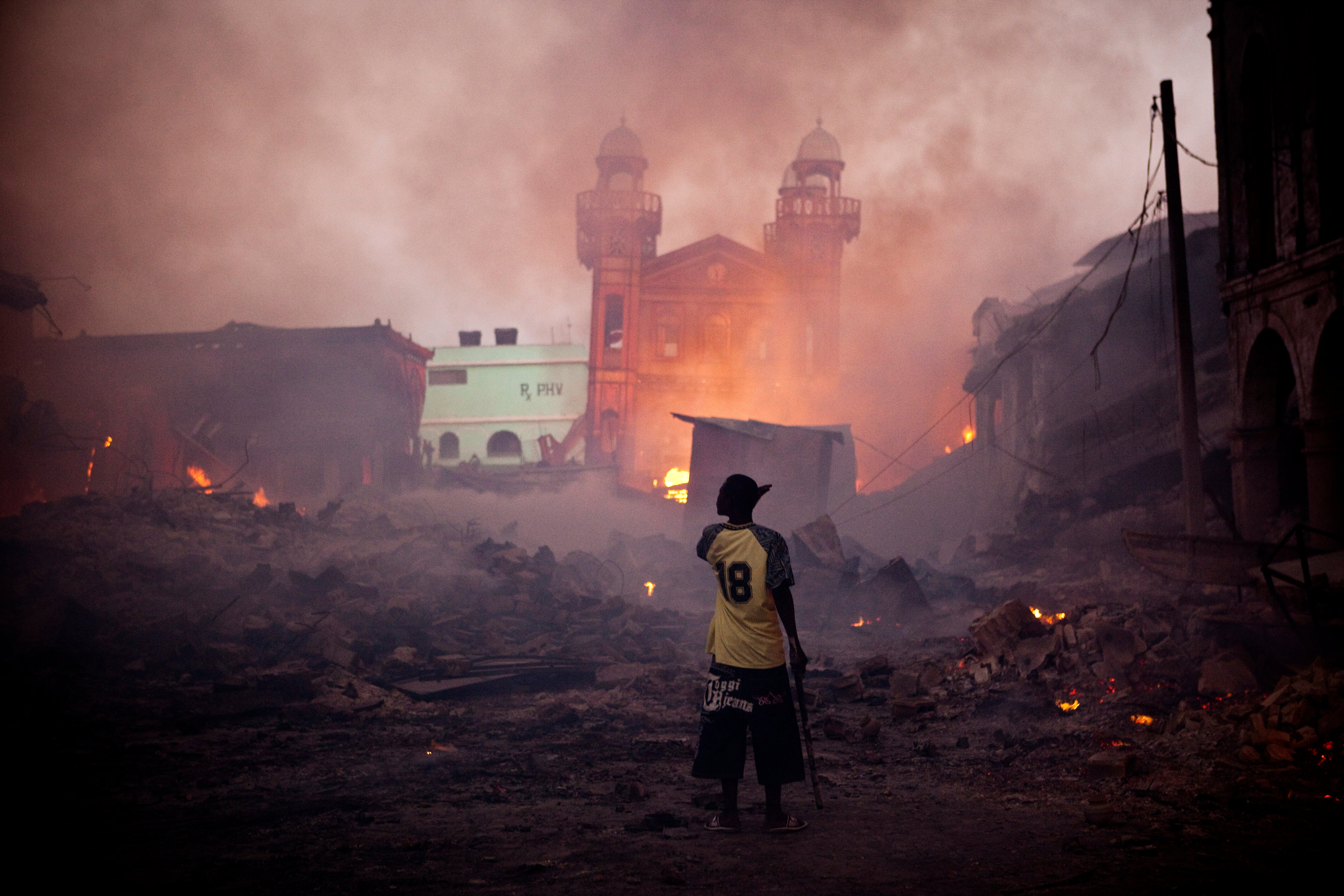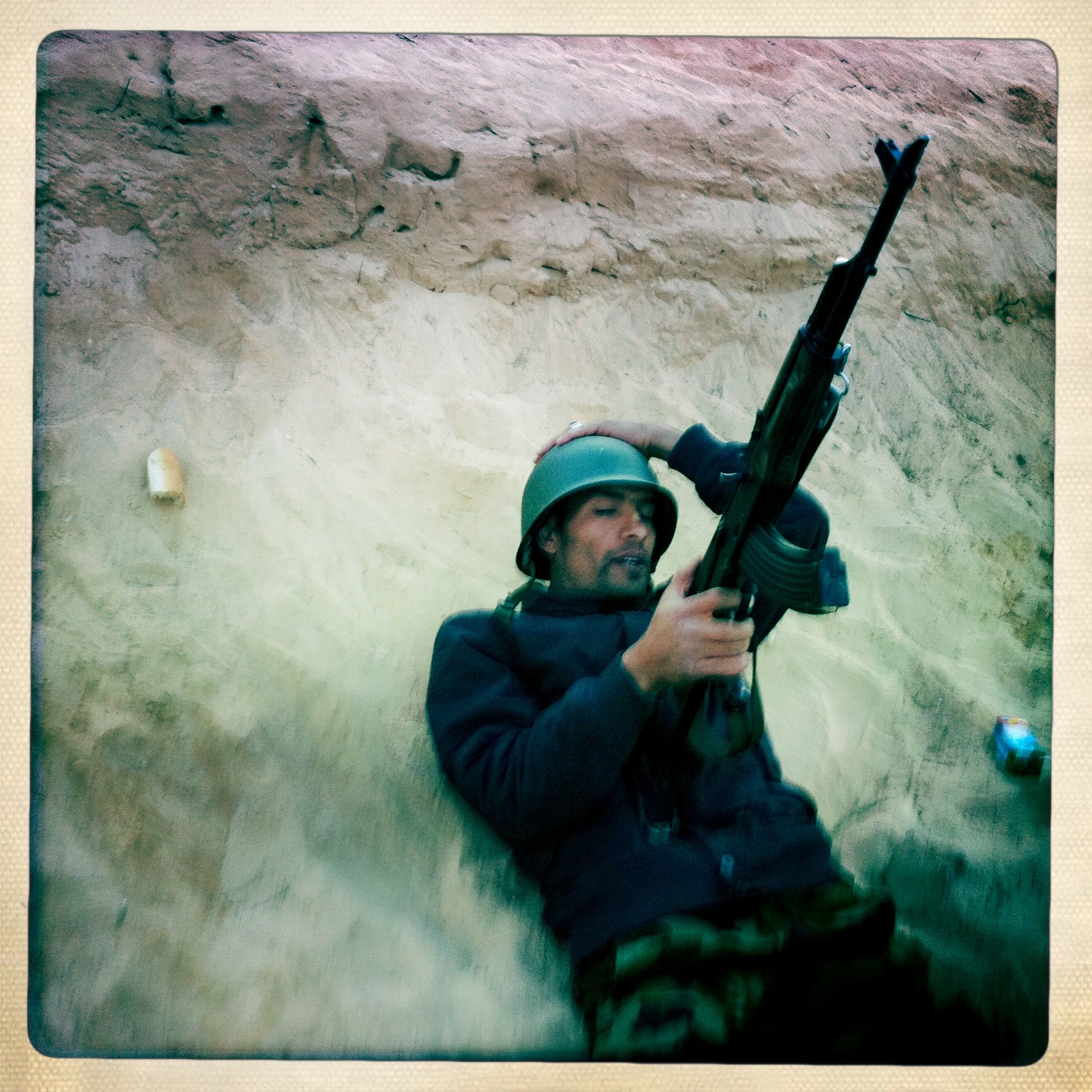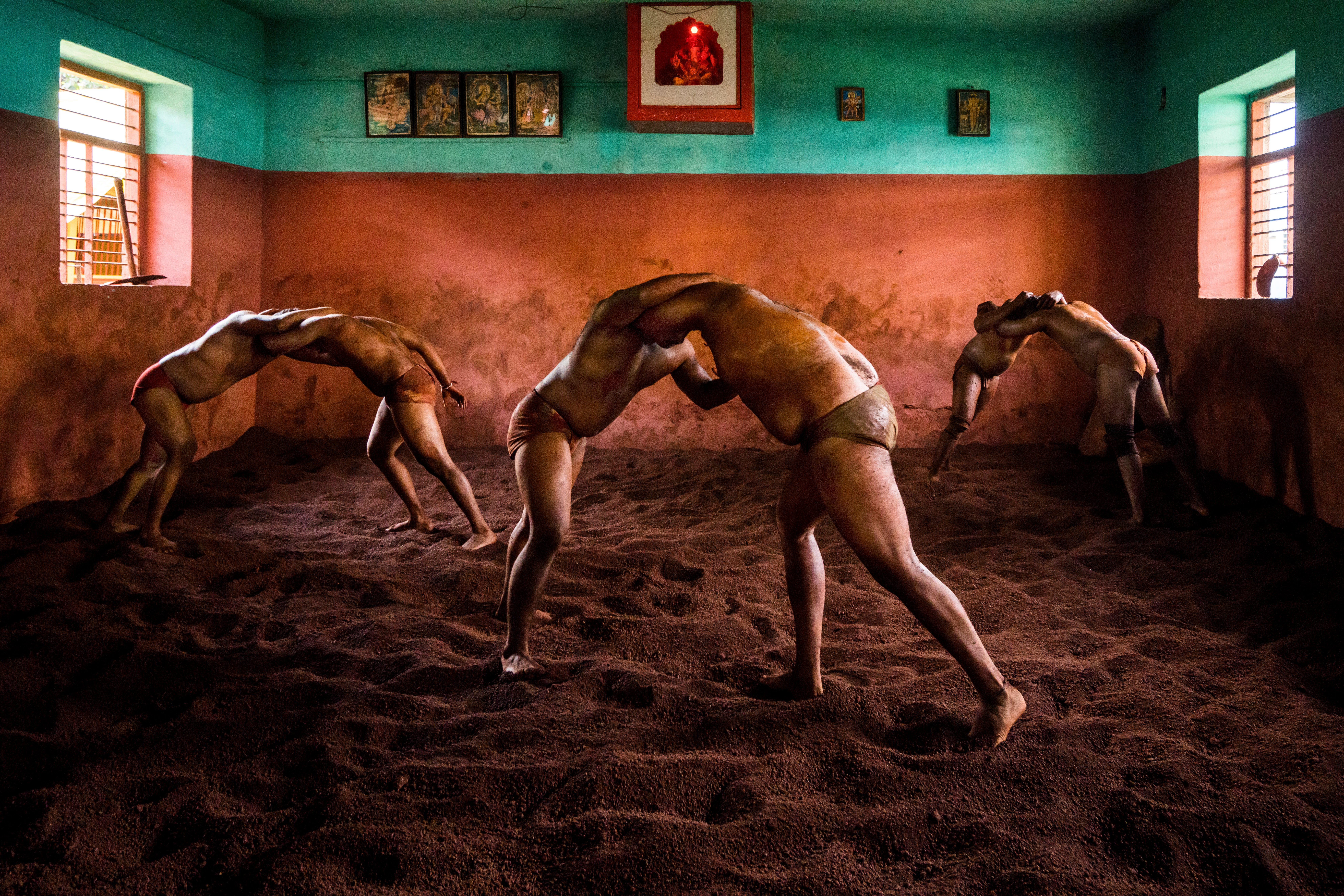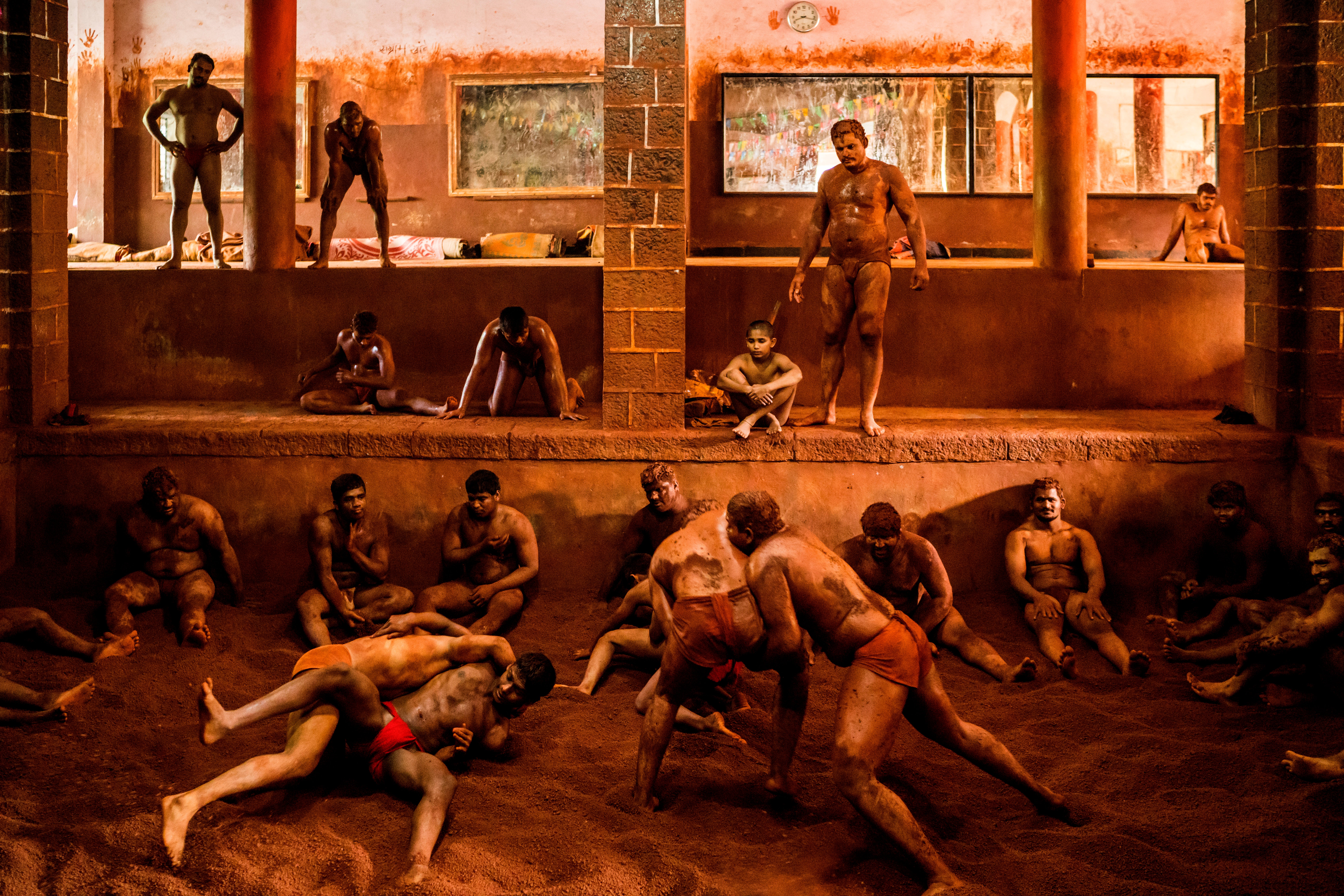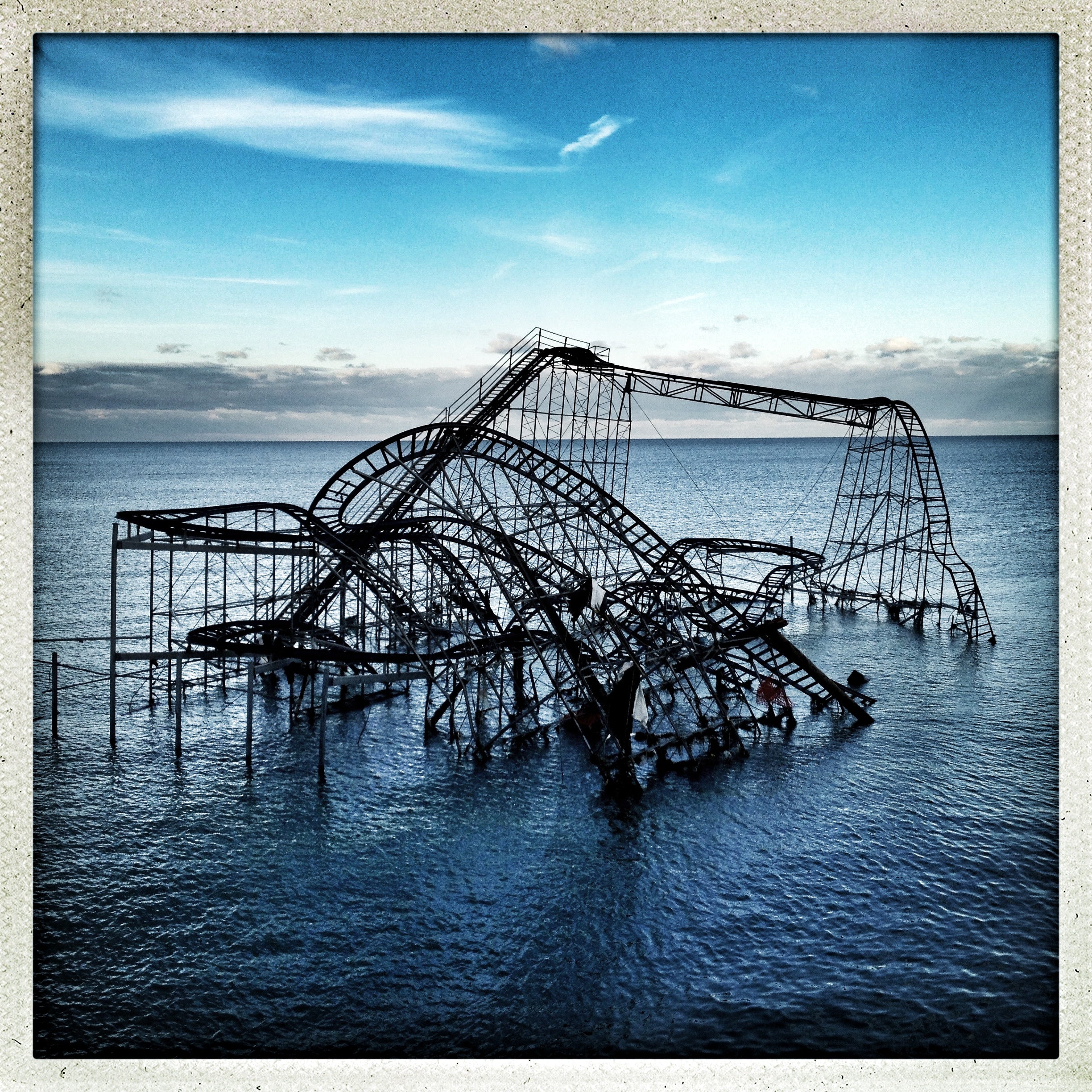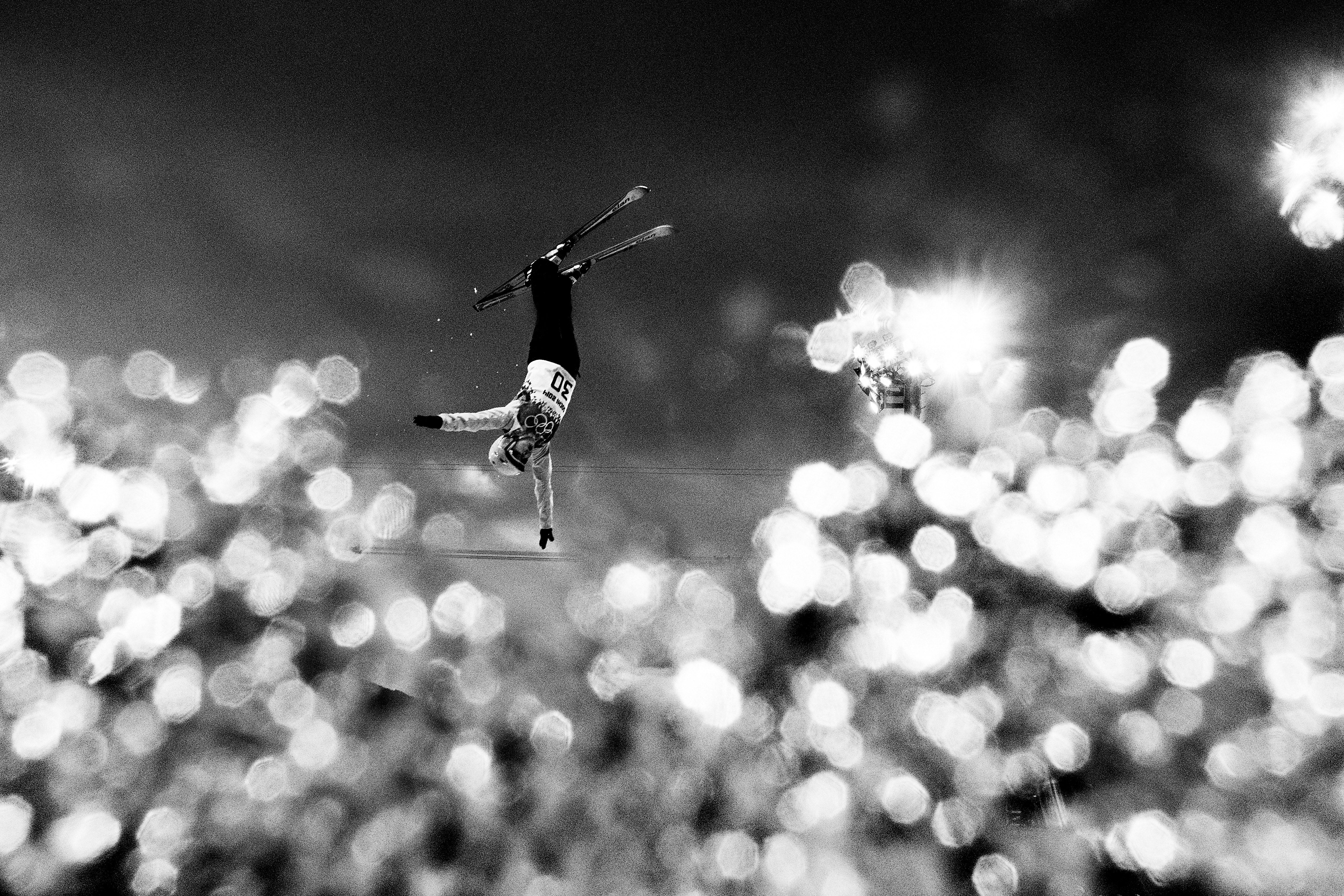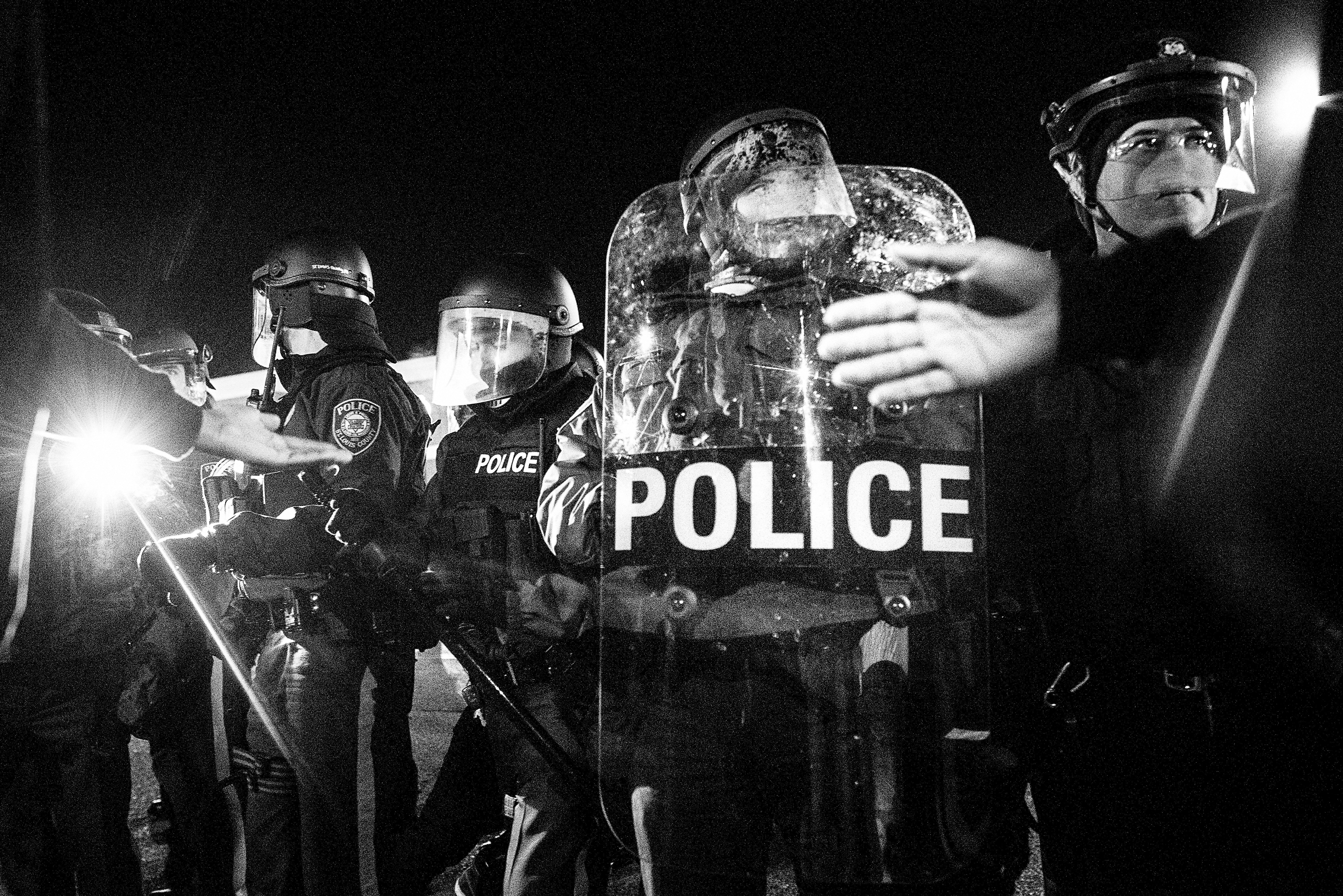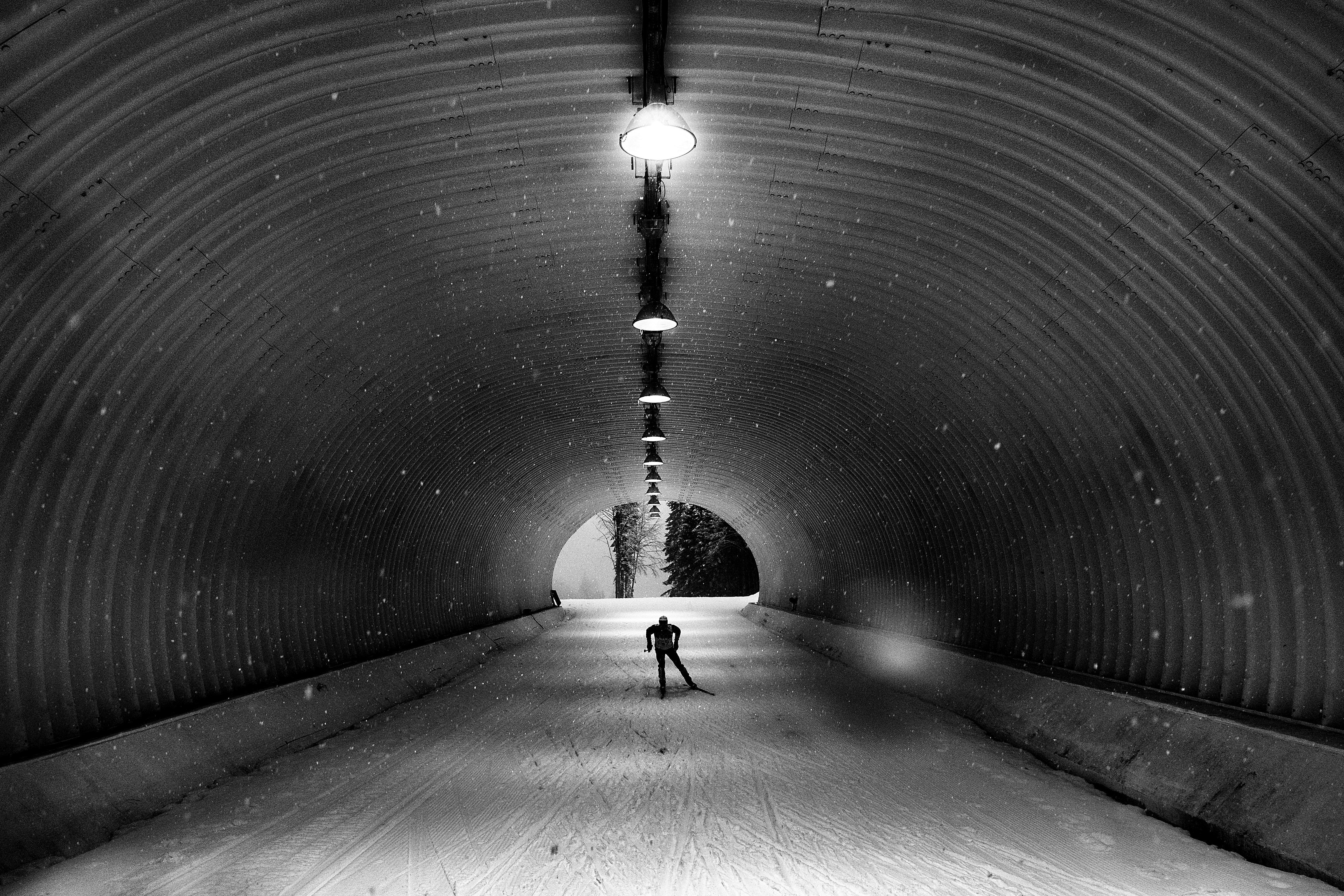Photojournalist and Sony Artisan Ben Lowy is a natural born conflict photographer. He made his name before he’d even turned 30, photographing in Libya, Afghanistan and Iraq. In recent years, as his family’s grown he’s stopped the dangerous work of covering conflict, instead exploring advertising and editorial photography, personal projects and even commercial video production as well. Here’s the story of how he traveled so far so fast, and how he continues to evolve as a photographer.
Alpha Universe: How did you first come to photography?
Ben Lowy: Photography began for me being a failed illustrator. I wanted to be a comic book illustrator but I wasn’t very good, or at least I wasn’t as good as I wanted to be, and I ended up trying to get into photography so that I could draw better. I was going to bookstores to trace pictures from photo books like the bodies of people, so I could draw better. I came across James Nachtwey’s Inferno. I had this eureka moment when I was sitting in the bookstore looking at Inferno. I had thought it was one of these fashion photo books, because it was so big. I pulled it out thinking this is just another ‘nude men, part seven,’ that I could trace. Then I sat there for three hours, actually. It changed my whole perspective and I guess you could say, the direction of where I wanted to take my photography. I was 20 years old and I was really inspired to visually tell stories that mattered to me.
My father was born in a concentration camp, and I grew up hearing so much about the Holocaust and what my father and my grandparents went through. I was very active in high school with groups that were dealing with the Balkans and that discussed Rwanda. I lived with my father when I was 15 until I left for college and every day, when I came home from school and did my homework, we would eat dinner and watch the nightly news with Tom Brokaw or Peter Jennings. I had it kind of nailed in me to pay attention to the world. I think in some ways, I was exposed to a lot of the trauma of the world early on.
Alpha Universe: It’s still a long way from looking at photo books to actually working in a war zone.
Ben Lowy: I graduated with a BFA and took a year off, went to Paris and promptly went broke. Then I ended up going to Israel and Palestine to cover the second intifada when it started in early 2001. When I was in Paris, I went to go see Harrison’s Flowers [a film about a photojournalist] and I sat next to a photo editor. I told her I really wanted to cover conflict zones. She introduced me to one of the founders of a news agency. I didn’t even know how to use my camera, really. They said, ‘We can always use photographers who can speak Arabic and Hebrew to cover Israel/Palestine.’ I was said, ‘Oh, I can speak Arabic and Hebrew’—totally lying through my teeth. They gave me 400 rolls of slide film and I was there from February or March of 2001, just shooting and learning. A couple of photographers saw that I was totally fresh and they took me under their wings and showed me the ropes.

Above: From Lowy's early work in Israel/Palestine in 2001. Photographed with transparency film, this area is where the separation wall is between Israel and Palestine.
Alpha Universe: So the language barrier wasn’t a problem?
Ben Lowy: Well, it would have made things easier and more difficult. If you get into a conversation with someone, you can’t actually photograph because you’re just having an interview. I actually think that if I did speak those languages, it would be more difficult to photograph. When you’re having this whole conversation while photographing, your focus gets pulled in both directions of interviewing and making images. I also find that some subjects become self-conscious when they’re in constant conversation with me because they’re aware of my presence. I work better when I separate the two tasks— I’m engaged when I interview but, I become I fly on the wall when I photograph.
Alpha Universe: What’s your situation now? And how’d you get here?
Ben Lowy: I’m currently represented by Getty Reportage for my editorial still photography work. My wife and I are represented as co-directors by Pogo Pictures for commercial video. When I was still in college I did an internship at the St. Louis Post Dispatch. In 2001 and 2002 I was going back and forth to Israel and Palestine. My first really big assignment was covering the war in 2003. From 2003 to 2008 I covered Iraq. From 2007 to 2011 I was in Afghanistan. I was in Libya, Darfur, Papua New Guinea, and Aceh in Indonesia. That was really an important time for me and I learned a lot as a journalist. I was very focused on visual storytelling and the events that were happening around the world.
In 2011 I had planned to be in Misrata but my wife was sick and in her third trimester of pregnancy for our second child, so I went back home. I wasn’t there when the mortar attack happened and Tim Hetherington and Chris Hondros were killed, and Michael Christopher Brown was injured.
I did end up going back to Libya and Afghanistan one last time, and I didn’t have any close calls or anything like that—well, I did actually have a close call—but I think it was just time. I just thought, maybe it’s time for something else for a little bit.
Above: Tripoli, Libya. A rebel stands on the infamous "Hand of Gaddafi" monument in the Bab Al-Azizya compound a day after numerous rebel brigades defeated Gaddafi loyalists for control of the massive military and government center, on August 25, 2011 in Tripoli, Libya.
Alpha Universe: It had to be hard balancing war photography with a young family back home.
Ben Lowy: There’s a really well known photographer—I won’t mention his name—I was actually sitting down with him and Tim Hetherington in Benghazi, we were eating breakfast in our hotel, and we were talking about families. He looked over and said ‘Ben, did you ever see my pictures from the Balkans?’ This is a man who’s 25 years my senior. I thought, ‘No, I never did,’ and he said ‘Yeah, because I had a four-year-old daughter.’
I think back: what do I remember from when I was five or six years old? I don’t remember anything. If I die now, my kids won’t remember me. Having a career of any kind that goes beyond what most people are doing, requires ego and a little bit of selfishness— in whatever career you’re in, whether you’re a doctor a lawyer or a photographer. I think photography is also my form of self-expression. I'm still a photojournalist, I'm still covering news stories, but there’s still some of aspect of myself that is translated in my images. I understand that this is an important job, but I don’t necessarily want to put that before my kids.
It happened at the same time that the industry changed. It’s not as if someone’s calling me going, ‘Ben, go to Afghanistan’ anyway. I’ve been trying to spend the last few years diversifying quite a bit. I’ve always done sports. Sports was always my way of dealing with coming back to America after being in war zones. I photographed a lot of cage fighting. It was just my way of transitioning, so I built on that. I covered the Super Bowl for a few years for ESPN, and I ended up shooting the Olympics, a lot of fighting sports, wrestling, all over the world. The methodology of sports photography is kind of similar to conflict photography; you’re waiting for that peak moment of action.
Above: The first women's ski jumping competition held at the 2014 Winter Olympics in Sochi, Russia.
I’ve also been transitioning to video. Last year, my wife and I co-directed a nationwide campaign. I’ve been doing a lot of trekking and adventure photography. That seems to fulfill a need that I wasn’t able to do in a while. I went to Iceland on a trekking assignment early this year and I was on the phone with my wife and she said, ‘you sound so happy!’ There are times I just put my cameras down and hike. I do really love doing that. I just did a couple of underwater assignments, which were great. I swam and photographed great white sharks. I was in Palau for the New York Times Magazine.
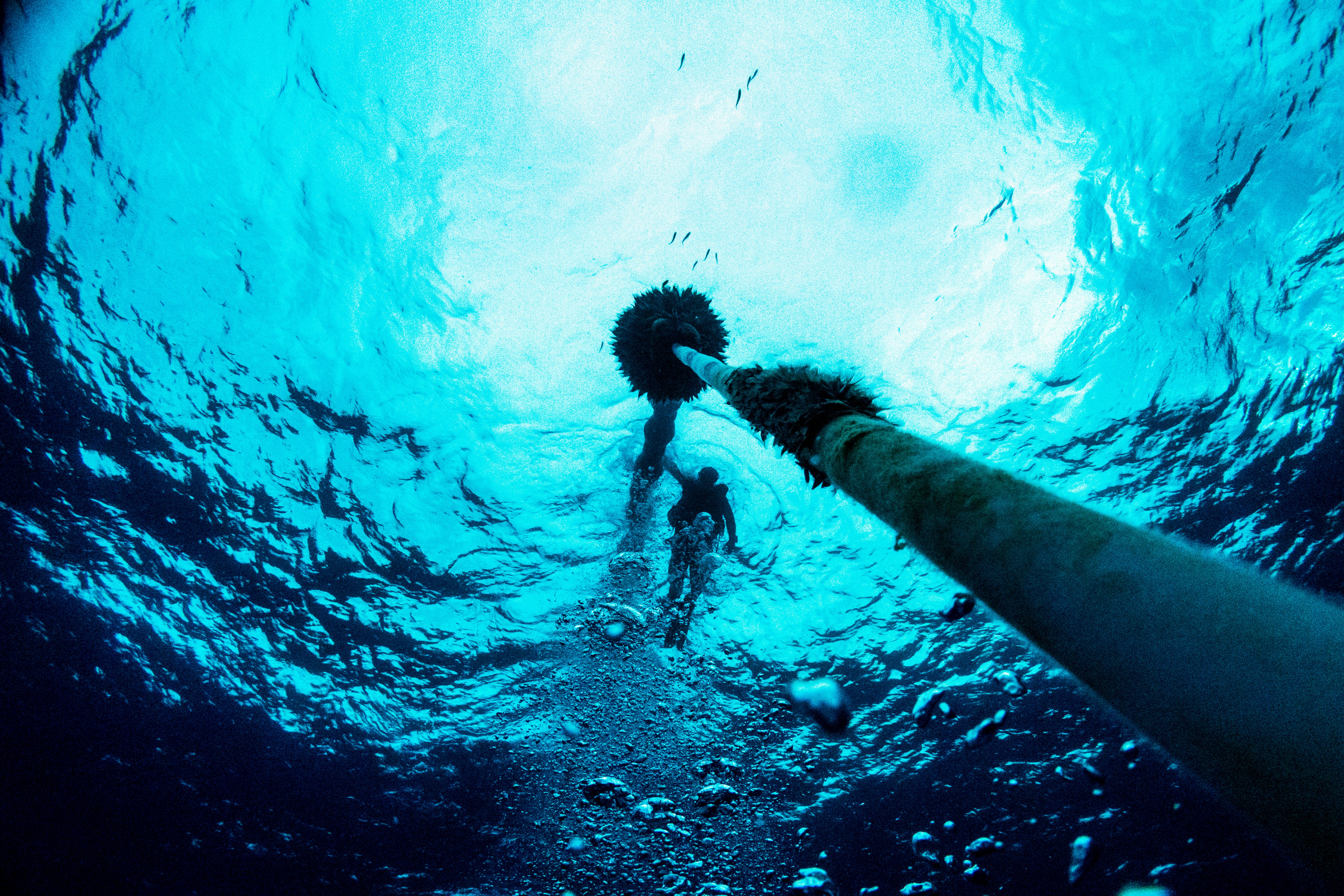
Above: On Assignment in Palau. Lowy made this photograph with a Sony RX100 IV in an underwater housing.
Alpha Universe: You’re clearly up for an adventure. Is that the difference between you—a photographer who actually went to photograph in war zones—and those of us who romanticize it from the safety of home?
Ben Lowy: I knew that I was mentally prepared to do conflict work. I still am. I know I can go stand in front of a dead body or be in a situation where bullets are flying and remain relatively composed. There’s a certain ability to compartmentalize that is needed in order to cover conflict. I knew I was always able to do that, which is maybe why I knew I could do conflict work. But I’m also the type of person who has no problem wandering around the world where no one knows me. And I like roughing it and living out of a suitcase. When I first told my father that I was getting into photography, he knew, ‘It’s war photography, isn’t it?”
He likes to tell the story of when in 1985 a hurricane hit New York, Hurricane Gloria, and I was five. And I ran into the ocean. He had to chase me down. I was the kind of kid who broke my legs, both my arms, I’ve broken so much doing stupid things, like riding my bike down flights of stairs. I was that type of kid and I think he knew that I was somewhat of a risk taker.
I also grew up in New York in the 1980s. My mother was mugged four times over the years while we were going to school. I never lived a sheltered life, that made me feel more capable.
Alpha Universe: On your way to school?
Ben Lowy: I saw a chalk outline at the school bus once in the early 1980s near my house. A man who lived in the apartment building with my mom was killed for $28 in his wallet. Little details like that I totally remember. I remember the chalk outline. There was a huge massacre near our house. Like at a Korean and Japanese fusion restaurant on 99th street. It was in 1986. Something like 23 people were killed in a shootout. That was three blocks from my house.
Above: A young Haitian man watches fire consume the remains of several earthquake ravaged warehouses in downtown Port au Prince, Haiti. On January 12, 2010 Haiti was struck by a magnitude 7 earthquake which caused widespread devastation and nearly a quarter of a million deaths.
Alpha Universe: Does anything ever seem too dangerous?
Ben Lowy: No? I read Jon Krakauer’s book, Into Thin Air, and I thought, I want to climb Everest now. That’s stupid, right? That’s stupid. But I do! I know I wouldn’t be any good at it. I just watched the Meru film by Jimmy Chin, and it seems miserable but I kind of want to try that out.
Alpha Universe: So should we think of you, officially, as a former conflict photographer?
Ben Lowy: No. It’s not off the table. Depending on what I would do, but I’d have to have a long conversation with my wife. She knows what moves me, and what’s important to me. But also at the same time… I almost lost my marriage over photography. After Tim and Chris were killed, I did go back to Libya. I told her I needed and wanted to go back, I felt Libya and the whole crisis in the middle east was one of the most important stories of our generation and I wanted to cover it. I promised I wasn’t going to take serious risks, and she said okay.
So I went back. On the first day when Tripoli was falling, I was in a house-clearing operation with rebels and they were running up the stairs and this guy's head just exploded in front of me. Someone shot him while my finger was on the shutter, and I had this moment of death. He fell down on the top flight of the stairs and I was on the bottom. I stood there stunned and still shooting, watching blood cascade down the stairs like a waterfall, and I ran out of the building.
I didn’t move the pictures, I didn’t send them to anyone, it was impossible to publish. It’s a gruesome image. Weeks later I had an assignment to leave Libya and go to Afghanistan and shoot for the New York Times Magazine. While I was there, I kept on thinking back to this image and thinking about how this guy made this ultimate sacrifice, and it was an incredible image that conveyed the ravages of war, so I should at least put it online somehow. I sent it in. My wife saw the image and she called me on my American phone in Afghanistan, and she accused me of cheating on her with war because I had promised that I would not to take these risks. She was like, ‘I’m going to leave you and take the kids and you can just be this war photographer because you don’t care about us.’ I spent hours on the phone—I remember my phone bill from Afghanistan was like $4,000 that month, because it was still my New York number—pleading with her and saying, ‘No, I love you and I know it was irresponsible and I was just caught up in this moment, and I’m not going to do it again.’ And it’s worked out since then.
Above: Ajdabiya, Libya. A scene during the civil war against Dictator Muammar Gaddafi's regime in Libya on March 25, 2011 in Ajdabiya, Libya.
Alpha Universe: It seems to me that in a war zone, every time you raise your camera it’s to photograph something important. But back home…
Ben Lowy: It’s true. But a long time ago when somebody asked me about why I photograph war, I said if we only photograph the beautiful, happy moments of human existence, we’d only be telling half the story. At the same time, photographing war alone is telling only half the story. My children were a turning point for me in the sense. Yes, there is tragic injustice and misery across the globe and these stories need to be told because it behooves us to be informed. But at the same time, there are beautiful, epic moments all around us that aren’t horrific and are worth celebrating as well. I love photographing my wife and kids. I love the underwater adventure work that I’m doing now. I had my first few wildlife assignments this year. I love the idea of doing all these things. I’m shooting sports and wildlife and underwater and conflict. I’m doing as many as I can, because I want to see it all.
Above: Kolhapur, India. Indian Kushti wrestlers grapple during daily practice in a talim - a wrestling center - in Kolhapur, India. I spent time during my 2015 trip in India documenting this traditional sport as part of a larger body of work documenting traditional wrestling worldwide and conflict resolution through sports. Photographed with the Sony α7R II.
Alpha Universe: What are you shooting with now?
Ben Lowy: I have the Sony RX1R II and the α7R II. Those are the two cameras that I use primarily right now. I’ll probably get another one or two soon, and I just tried out the new G Master lenses.
Alpha Universe: How did you come to Sony?
Ben Lowy: So what happened is, I was really into street photographer in New York City. I still am, but I live in the suburbs now so it’s a little bit harder. I really was one of those people pushing the use of the iPhone early on. I was shooting with the iPhone all the time. And I met Ruddy Roye, who is another big iPhone photographer, and we became really good friends. He is more of a street portrait photographer. He would have his iPhone but he also had these other little cameras. He would experiment with cameras all the time, sell them, get new ones, and try out all the different cameras out there. He had the Sony RX1R, with the viewfinder that tilts.
I’m 6’1”, so most of my pictures throughout my career are basically looking down on people. And I was amazed by the RX1R because it brought shooting with a waist level finder back to me. When I went to Washington University, I would borrow the department’s Hasselblads and shoot with the waist level finder. And when I went to Israel that first time in 2001, I bought a Nikon F3 where you could remove the prism and do the same thing. I like this idea of being able to look down. I thought ‘This Sony is amazing.’ So I reached out to Sony and told them I’d love to use these cameras. At the end of 2014 I got my first Sony and started using it on assignment. And from then on I’ve been using Sony cameras.
Above: Part of the devastation wrought by Hurricaine Sandy.
Alpha Universe: Why do you think advertisers are particularly interested in hiring photojournalists for commercial assignments these days?
Ben Lowy: I don’t think it specifically has to do with me being a photojournalist that I get ad work. I don’t necessarily have the style or the type of imagery that would attract, say, BMW. BMW is not going to call me and ask me to shoot a commercial, because that’s not what I’m trying to do.I think a significant part of the equations is personality. Like in any business, personality can win people over. To be honest, people can pick up a camera and make images. It takes practice and it takes dedication to a craft, but it’s like a jump shot in basketball. If you keep on practicing, you’re going to be able to do it. Especially now with digital, you can take 10,000 pictures in a day. You can guarantee you’re going to get one that’s usable. But do people want to work with you? Do you bring something different to the table? I bring my experiences and my ability to weave those experiences into what I’m photographing. I bring my experiences to the stories I tell and how I interact with the subjects. I’m a chameleon. I think, that is more my talent than anything else. I can go to the Middle East or Asia or South America, and I can adapt to different scenarios in order to become intimate and communicate effectively with my camera. I think that is a positive skill. I think that’s what wins people over: if they know you can morph and change and evolve.
Above: Women's Aerials competition at the 2014 Winter Olympics in Sochi, Russia.
Some people tell me they can look at my images and know that it’s my image. I don’t necessarily know that because I think everything I do changes every year. That might be good, it might be bad. The photographers who inspired me, most of these guys, I look at the breadth of the body of their work and their style is consistent throughout. That’s not actually how I think of my work . You look at actors, Tom Cruise is Tom Cruise in every single movie he’s ever been in. Will Smith is Will Smith in every single movie. Then you look at character actors and they’re different in each movie. I kind of relate to character actors as a photographer. I let each story change how I shoot. Maybe there’s some compositional elements and some approaches to the way I expose and how I tone the colors that are similar, but I like to think that I change my approach for different stories. That’s why my work or how I think, changes over time. Whether it’s my Oil on Water images versus my fighting images versus my conflict zone images, they're all distinctly different. For me, it's important to evolve and change and let what I’m seeing speak to me because it allows me to take a little of myself out of the equation.
Alpha Universe: Being receptive as opposed to imposing your will?
Ben Lowy: I think of this story… My wife and I got married in 2005. When we went to get our marriage license (you write down your profession on the license application), my wife wrote photojournalist and I wrote photographer. So, I think on some level I was thinking about that even then. I mean, I even want to go take a class in portraiture lighting. I have no idea how to really effectively use lights, and I don’t know how to take a portrait for shit. But I want to learn, because I think it’s something else I want to conquer.
Above: Ferguson, MO, November 25, 2014. Protesters and police interact, sometimes violently, in front of the Ferguson police department after a night or riots and destruction following the grand jury's decision not to indict police officer Darren Wilson in the death of teen Michael Brown. The Ferguson police were criticized for their heavy handed and violent tactics following the protests and riots that were sparked by the killing of unarmed black teen Michael Brown by white police officer Darren Wilson in August 2014.
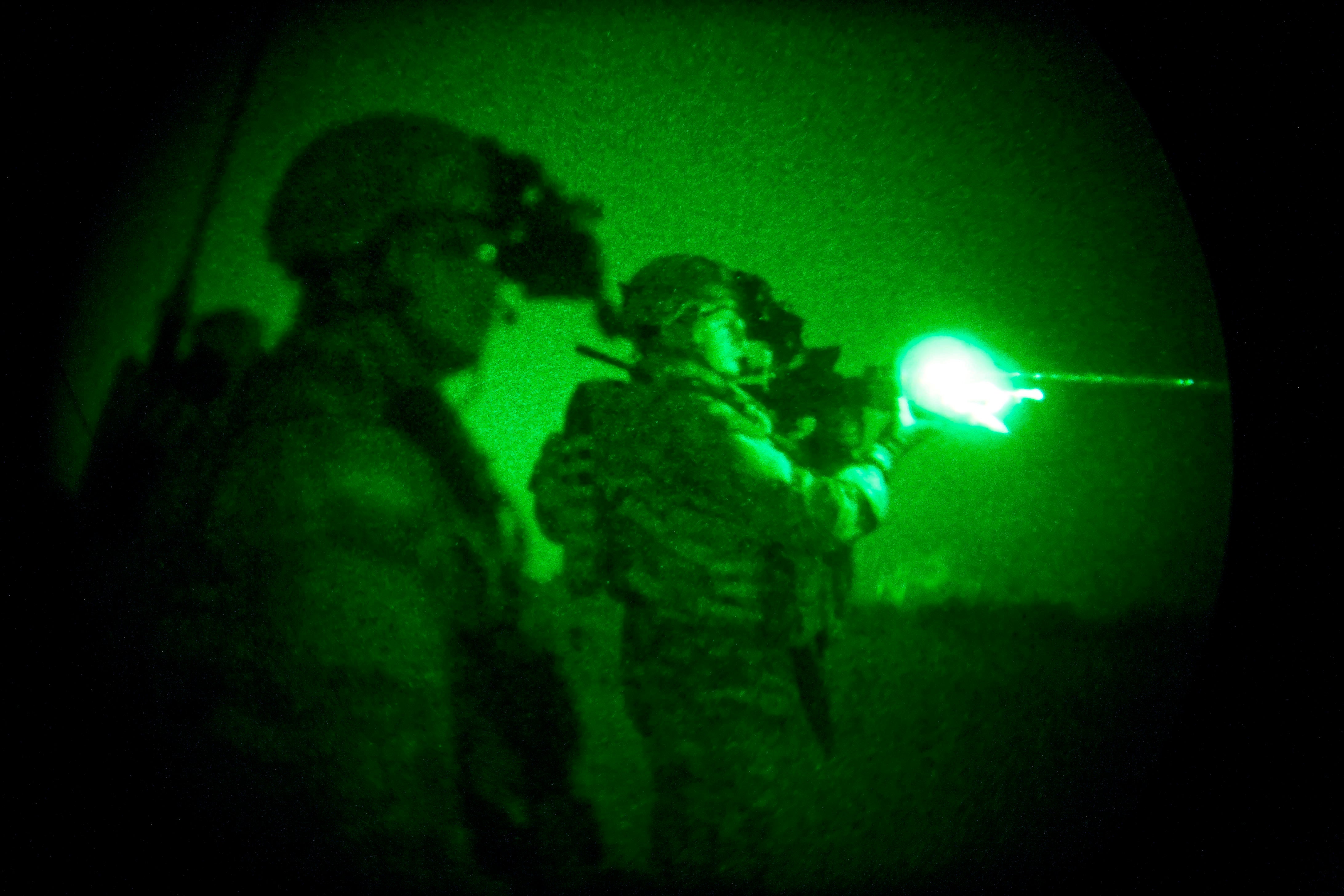
Above: Embedded in Iraq in 2007.
Above: Men's 30k cross-country competition at the 2014 Winter Olympics in Sochi, Russia.
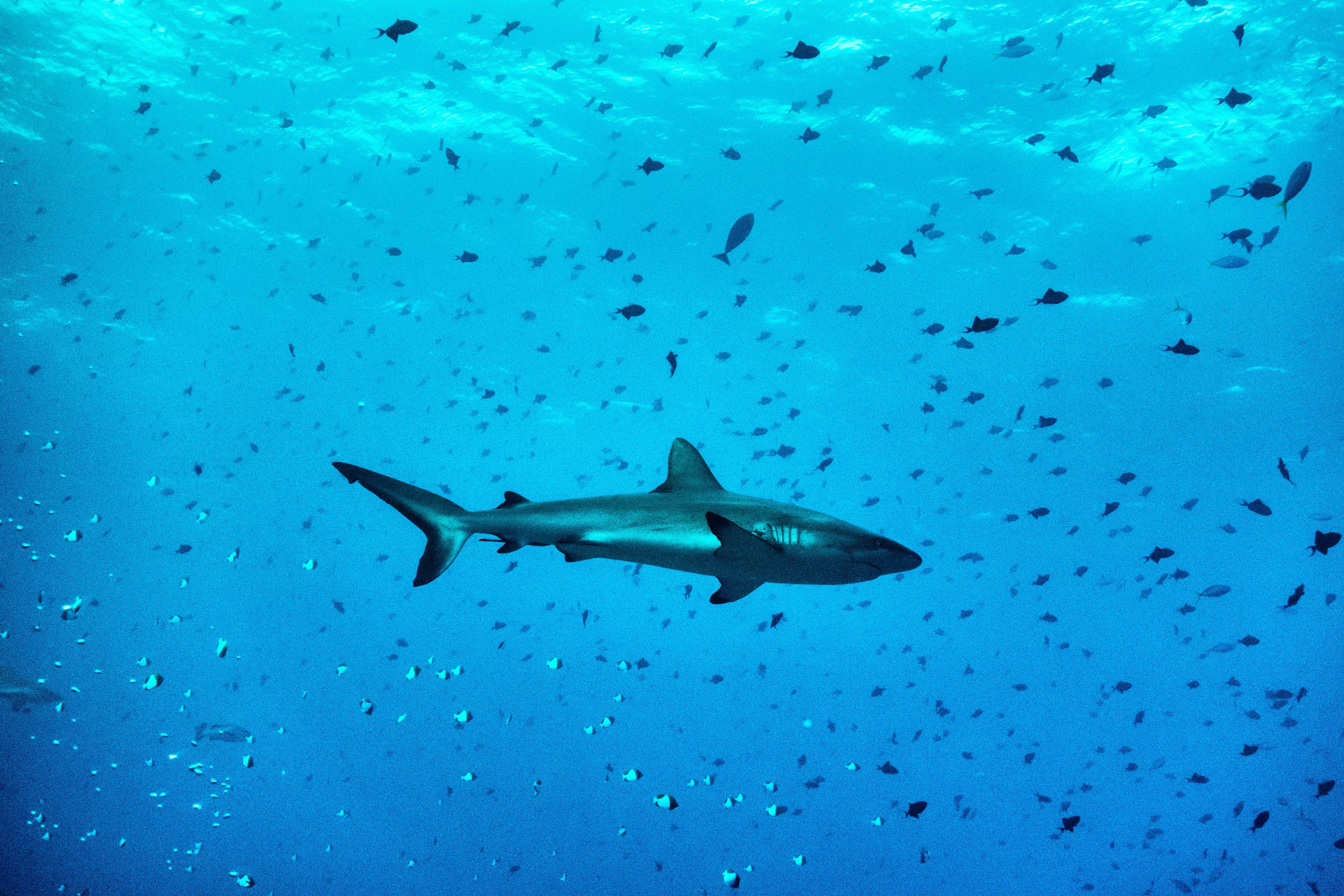
Above: On assignment in Palau in 2015. Established by the government of Palau, reef sharks and other marine life occupy a massive protected marine reserve the size of France on August 29, 2015 in the territorial waters of Palau in Micronesia. Photographed with the Sony RX100 IV in an underwater housing.
You can see more of Ben Lowy's work at benlowy.com
